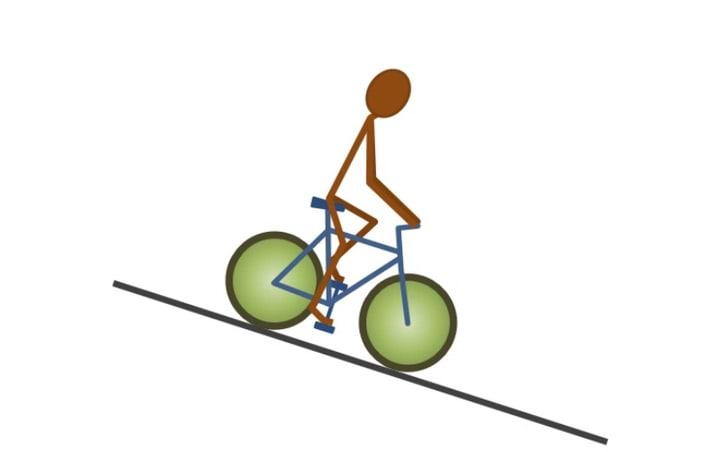Learning focus: | When a force makes things change it mechanically transfers energy between different energy stores. Friction transfers energy mechanically into a heat store of energy. |
Observable learning outcome: | Identify where energy is transferred by rubbing |
Question type: | Diagnostic, confidence grid |
Key words: | Energy store, energy transfer, drag, friction, heat |
In teaching energy the BEST resources have adopted a framework based on ‘energy stores’ and ‘energy pathways’ which is advocated by, amongst others, (Boohan, 2014), (Millar, 2014) and (Tracy, 2014). As Millar (2014) says, this approach “is not perfect - but it is adequate and significantly better than [approaches] based on lists of ‘forms of energy’.” A clear guide to this approach can be found on the Institute of Physics’ website (Institute of Physics).
This question focuses on identifying places where energy dissipates by heating. Friction and drag are forces generated by an interaction between two objects or materials. When objects or materials move against each other work is done to move particles more quickly, which increases the temperature. When there is no movement, there is no heating.
Identifying how friction and drag cause heating introduces students to the dissipation of energy. Millar (2005) suggests that to make sense of the law of conservation of energy, students need to know that in almost every event there is some heating, whether desired or not, and a consequential increase in the heat store of the surroundings.
A summary of the BEST approach to teaching energy can be found on the Best Evidence Science Teaching home page which is on the STEM Learning website (Fairhurst, 2018).
Students should complete the confidence grid individually. This could be a pencil and paper exercise, or you could use an electronic ‘voting system’ or mini white boards and the PowerPoint presentation.
If there is a range of answers, you may choose to respond through structured class discussion. Ask one student to explain why they gave the answer they did; ask another student to explain why they agree with them; ask another to explain why they disagree, and so on. This sort of discussion gives students the opportunity to explore their thinking and for you to really understand their learning needs.
Equipment
For the class:
- Metre ruler (a wooden ruler works well)
- Supports for each end of the ruler (e.g. piles of books)
- 2N weight (200g mass) – it is important that it is hard to detect flexing of the ruler when this weight is added, so its size may need to be adjusted to suit the particular equipment used.
- 10N weight (1kg mass)
Differentiation
You may choose to read the questions to the class, so that everyone can focus on the science. In some situations it may be more appropriate for a teaching assistant to read for one or two students.
The brakes do not cause friction because Lucy is freewheeling, and her feet do not cause heating because they are not moving against the pedal – although some students may identify tiny movements that do generate heat and this can be encouraged through discussion.
The tyres are squashed at the bottom and as the wheel turns the squashed tyre springs back to shape. This moves the particles in the tyres more and their temperature increases. (The tyres are not sliding across the ground, so there is no heating in this way.)
As Lucy cycles through the air she bashes into air particles, making them move faster, which increases her temperature and the air temperature. If students have difficulty in identifying the places where there is heating, it can be helpful to discuss the processes and mechanisms of how energy is transferred at these points. Giving students further examples to discuss in pairs or in small groups can encourage social construction of clearer descriptions and better understanding of heating through dialogue.
The following BEST ‘response activity’ could be used in follow-up to this diagnostic question:
Response activity: Transferring energy
Boohan, R. (2014). Making sense of energy. School Science Review, 96(354), 11.
Fairhurst, P. (2018). Teaching Energy. [Online]. Available at: https://www.stem.org.uk/best-evidence-science-teaching.
Institute of Physics. Supporting Physics Teaching (SPT): Energy [Online]. Available at: http://supportingphysicsteaching.net/EnHome.html [Accessed July 2018].
Millar, R. (2005). Teaching about energy. Department of Educational Studies. York: University of York. Available at: http://eprints.whiterose.ac.uk/129328/1/2005_Millar_Teaching_about_energy.pdf
Millar, R. (2014). Teaching about energy: from everyday to scientific understandings. School Science Review, 96(354), 6.
Tracy, C. (2014). Science in the new curriculum: an opportunity for change. School Science Review, 96(354), 11.
